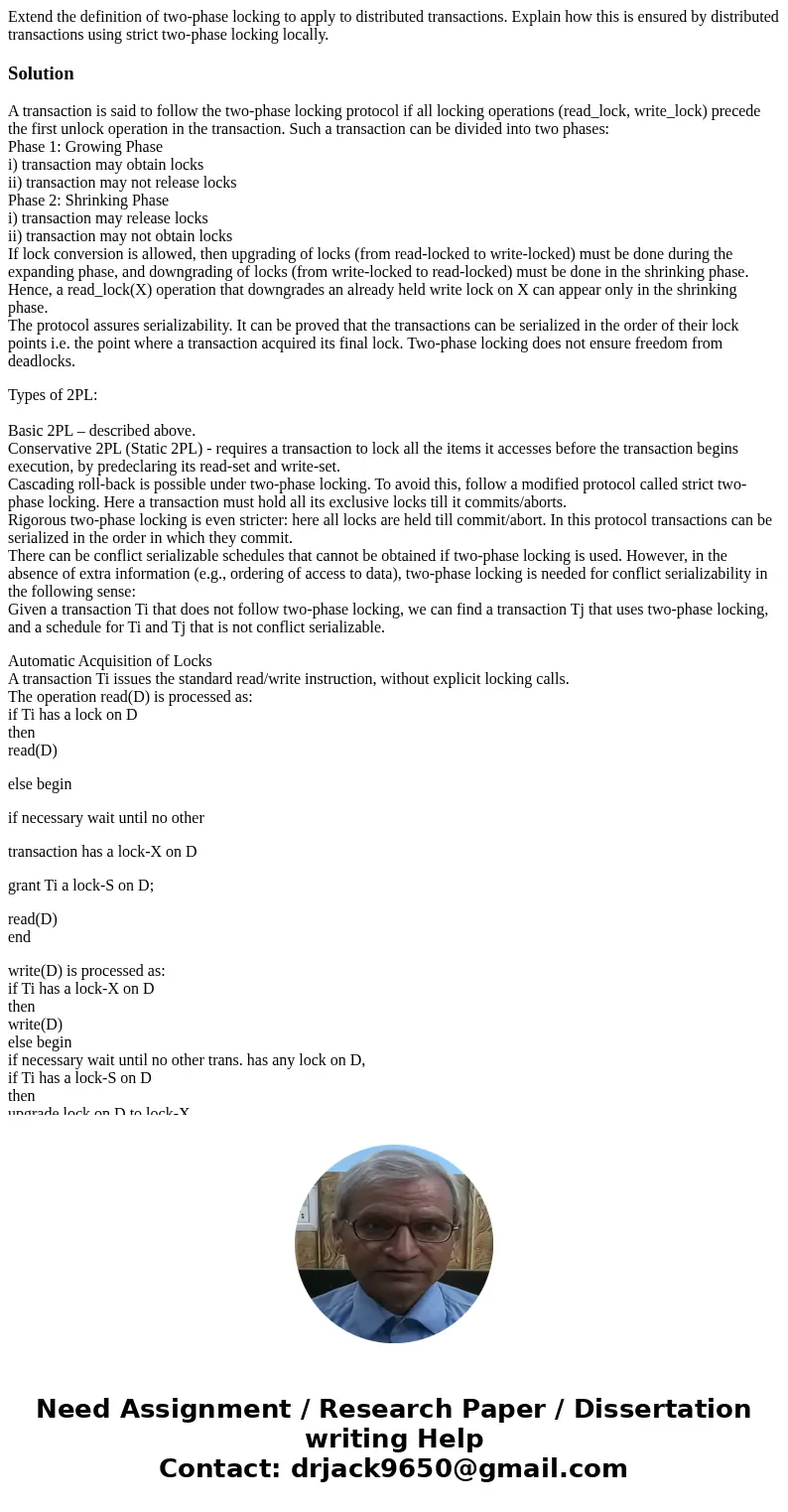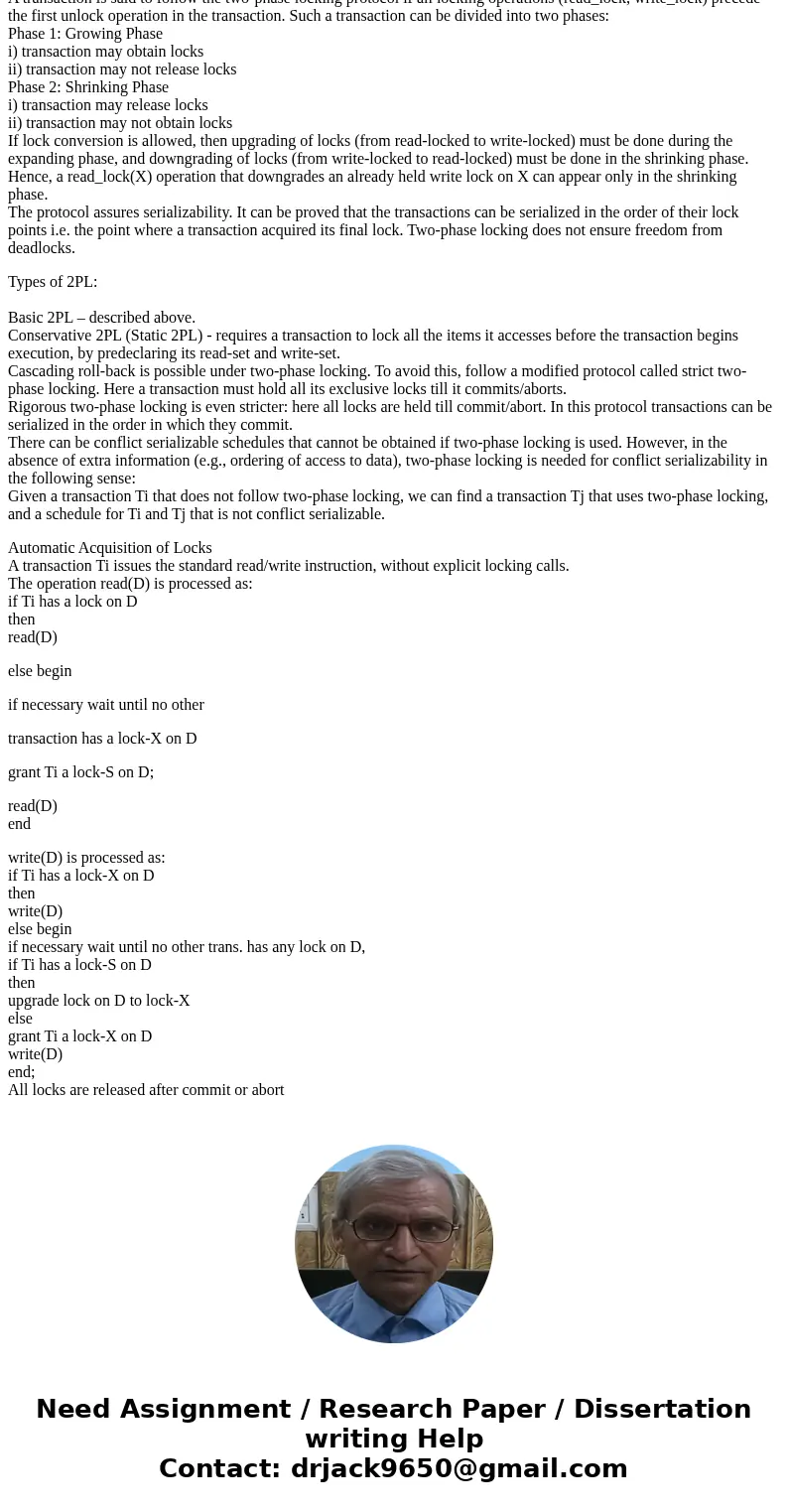Extend the definition of twophase locking to apply to distri
Extend the definition of two-phase locking to apply to distributed transactions. Explain how this is ensured by distributed transactions using strict two-phase locking locally.
Solution
A transaction is said to follow the two-phase locking protocol if all locking operations (read_lock, write_lock) precede the first unlock operation in the transaction. Such a transaction can be divided into two phases:
Phase 1: Growing Phase
i) transaction may obtain locks
ii) transaction may not release locks
Phase 2: Shrinking Phase
i) transaction may release locks
ii) transaction may not obtain locks
If lock conversion is allowed, then upgrading of locks (from read-locked to write-locked) must be done during the expanding phase, and downgrading of locks (from write-locked to read-locked) must be done in the shrinking phase. Hence, a read_lock(X) operation that downgrades an already held write lock on X can appear only in the shrinking phase.
The protocol assures serializability. It can be proved that the transactions can be serialized in the order of their lock points i.e. the point where a transaction acquired its final lock. Two-phase locking does not ensure freedom from deadlocks.
Types of 2PL:
Basic 2PL – described above.
Conservative 2PL (Static 2PL) - requires a transaction to lock all the items it accesses before the transaction begins execution, by predeclaring its read-set and write-set.
Cascading roll-back is possible under two-phase locking. To avoid this, follow a modified protocol called strict two-phase locking. Here a transaction must hold all its exclusive locks till it commits/aborts.
Rigorous two-phase locking is even stricter: here all locks are held till commit/abort. In this protocol transactions can be serialized in the order in which they commit.
There can be conflict serializable schedules that cannot be obtained if two-phase locking is used. However, in the absence of extra information (e.g., ordering of access to data), two-phase locking is needed for conflict serializability in the following sense:
Given a transaction Ti that does not follow two-phase locking, we can find a transaction Tj that uses two-phase locking, and a schedule for Ti and Tj that is not conflict serializable.
Automatic Acquisition of Locks
A transaction Ti issues the standard read/write instruction, without explicit locking calls.
The operation read(D) is processed as:
if Ti has a lock on D
then
read(D)
else begin
if necessary wait until no other
transaction has a lock-X on D
grant Ti a lock-S on D;
read(D)
end
write(D) is processed as:
if Ti has a lock-X on D
then
write(D)
else begin
if necessary wait until no other trans. has any lock on D,
if Ti has a lock-S on D
then
upgrade lock on D to lock-X
else
grant Ti a lock-X on D
write(D)
end;
All locks are released after commit or abort


 Homework Sourse
Homework Sourse